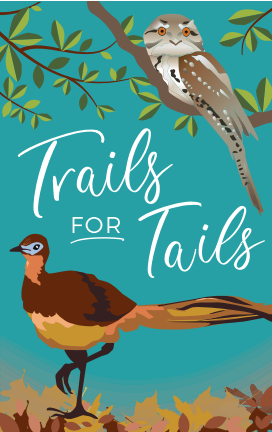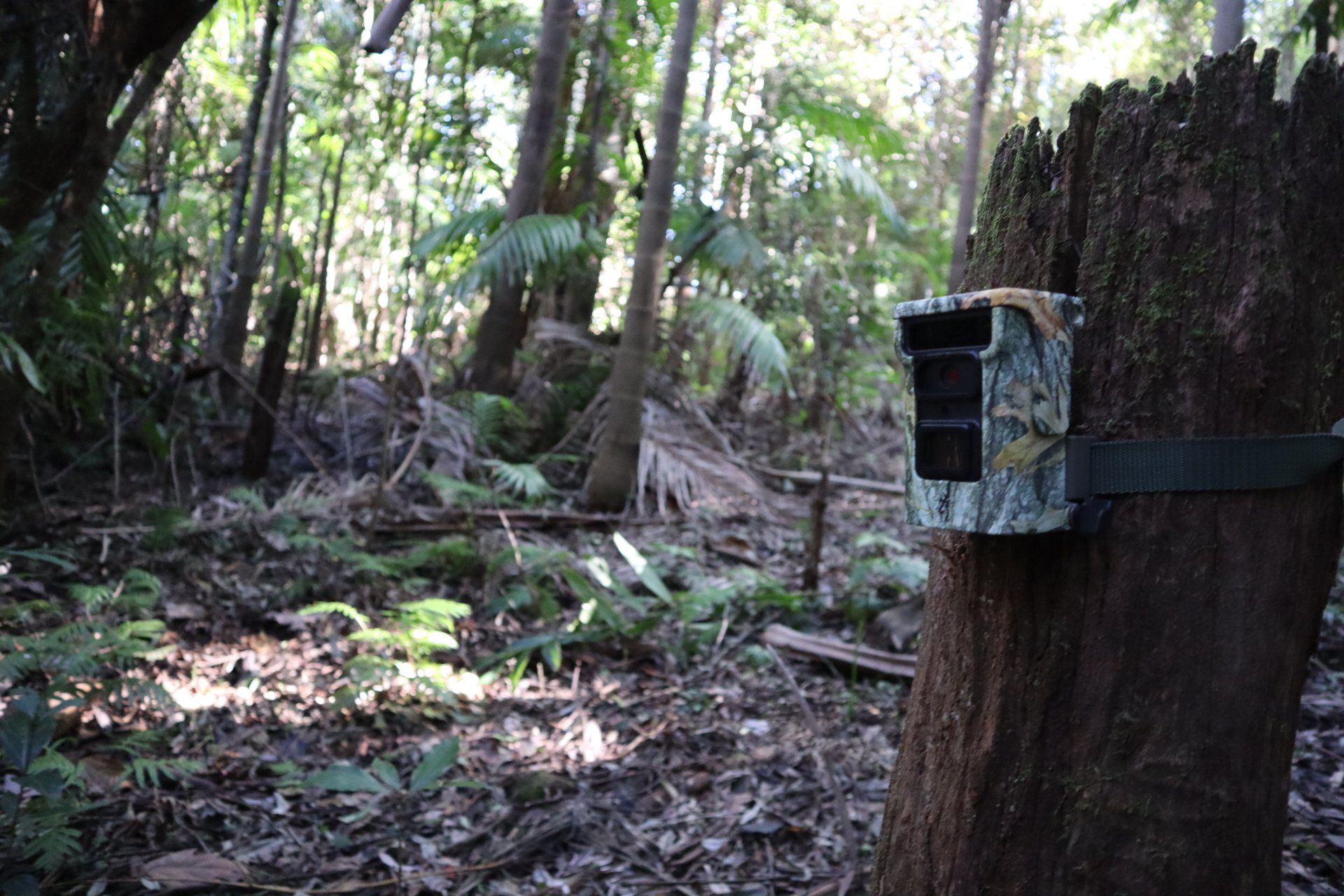Latest News
Christmas Newsletter
December 2020
With funding from Foundation for National Parks and Wildlife and the NSW Government's Saving our Species program, the Border Ranges Alliance has embarked on a 3 year project to find Albert's Lyrebird and Marbled Frogmouth in Kyogle, Lismore, Ballina and Byron shires.
Albert's Lyrebird (Menura alberti) and Marbled Frogmouth (Podargus ocellatus) are restricted in geographical range occurring in subtropical rainforest and associated vegetation types in northern NSW. The majority of publicly available records for both species occur in reserved areas ('on-park'). Little data is available about their distribution and abundance on private land ('off-park'). Off-park estate, however, forms the majority of land across which these species occur.
The overall aim of the project is to improve our knowledge of where these birds live and the threats that challenge their long-term survival. By working with interested landholders we can improve and perhaps expand areas of habitat currently used by Albert's Lyrebird and Marbled Frogmouth.
Progress on Albert's Lyrebird
Albert's Lyrebird breeding season has now wrapped up and monitoring is slowing down. We gathered HUGE amounts of data with plenty of successful audios, videos and images captured. Albert's Lyrebird was recorded at all eight of our participating properties, with some containing more than one calling male.
Acoustic monitoring provided the majority of Lyrebird records. Song meters were set daily to record two hours around sunrise and three hours at sunset, with calls proving most frequent around 7am. Lyrebirds are notorious for mimicking other sounds so identification was sometimes challenging! Our ecologist Dave Milledge over heard one performing a slightly off tuned Yellow-tailed Black-cockatoo, Kookaburra and Pacific Baza during the Marbled Frogmouth surveys. The more species one can mimic and the clearer they are, supposedly attracts the most females. Easy as that?
A minimum of two wildlife cameras were set up at each property and captured fantastic images. On properties where both male and female Lyrebirds appeared suggests breeding is likely in these areas. Hopefully we can confirm in the coming months when little Lyrebirds make their way into the cameras view (fingers crossed).
While trying to capture Lyrebirds we also wanted to monitor what feral animals were moving through each property. The cameras captured mostly foxes, a few cats and a couple wild dogs. Relying on camera footage and local landholder knowledge, it is assumed that ferals, particularly foxes, have increased after the 2019-20 bushfires. No evidence has yet found feral animals predating on Albert's Lyrebird but footage of a wild dog carrying a Red-legged Pademelon (threatened species) and a fox carrying a Native Brush Turkey is concerning. A well planned and successful feral animal control program using appropriate methods for the situation is being considered. In the mean time, these sites will continue to be monitored over the next year to try ascertain whether feral animals are impacting Lyrebird populations. Head to our website for more footage.
Finding the Marbled Frogmouth
You guessed it! Now we're on the hunt for Marbled Frogmouth. Being equally elusive as Albert's Lyrebird, if not more, on-ground surveys were conducted by Dave Milledge at our 8 participating properties. This confirmed a strong population in the Huonbrook area with 5 birds (4 male, 1 female) at one property and 2 more at another. Not far down the road, one more Marbled Frogmouth was heard at a property in Wanganui. Three more males were also observed at a property in Larnook.
"These are significant records (in Larnook) because apart from earlier surveys in Bungabee State Forest, there are no other records on Mackellar Range" said Dave.
Having engaged another 12 landholders in song meter monitoring, we expect to find promising results after the Christmas break. We also invite landholders to get in touch if you have Marbled Frogmouth living on your property and would like to participate in monitoring. If you're not quite sure what Marbled Frogmouths look like then click the button below to read up on their profile and listen to their unusual call.
Ecology in the Pub
4th Nov 2020
On November 4th 2020 at the Courthouse Hotel, Mullumbimby, we had the opportunity to speak at an event celebrating the Albert's Lyrebird... right up our ally!
It was a great event. We learnt about the most recent findings of our lovely Lyrebirds and had the opportunity to connect with likeminded people. Guest speakers included;
- Tim Low, wildlife biologist and author of “When Song Began”. Lyrebird evolutionary history.
- Sandy Gilmore, wildlife ecologist who has studied lyrebirds locally for many years.
- Fiona Backhouse, researcher from Western Sydney University studying Albert’s Lyrebird song and dance.
Huge thanks to Barbara Stewart from Wilsons Creek Huonbrook Landcare for organising the event and all the hard work you and the team are doing to save Albert's Lyrebird. To read up on our presentation, click through the slide below and follow the picture links for more.
News Release
4th Nov 2020
Media Release
19th Oct 2020
Ashley and a participating landholder, Graham, setting up a song meter
Ashley and participating landholder, Graham, setting up a song meter.
ButtonSlide title
How amazing are those colours?
Button
Slide title
Marbled Frogmouth (photo credit - Steve Mcbride)
Button









